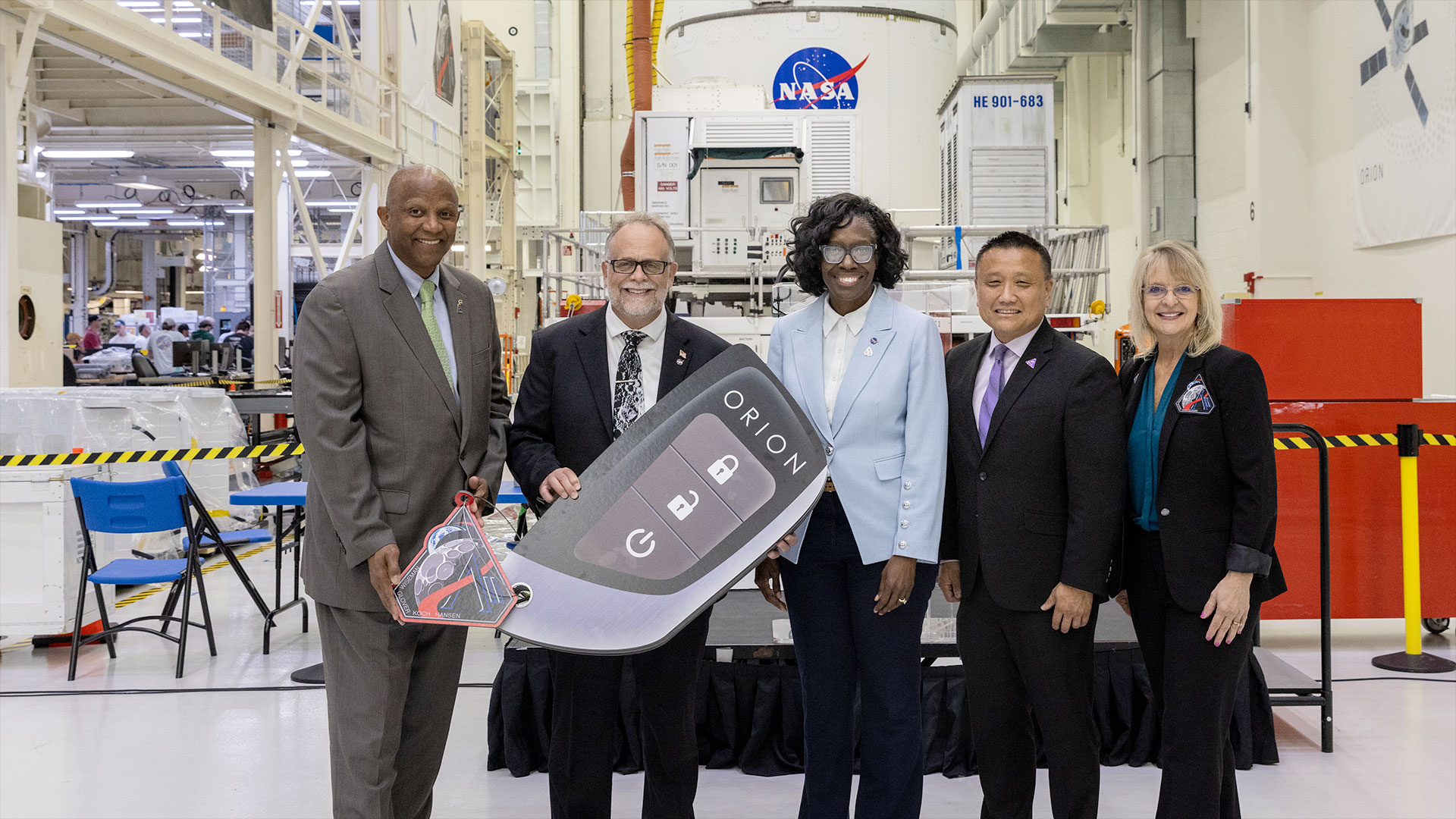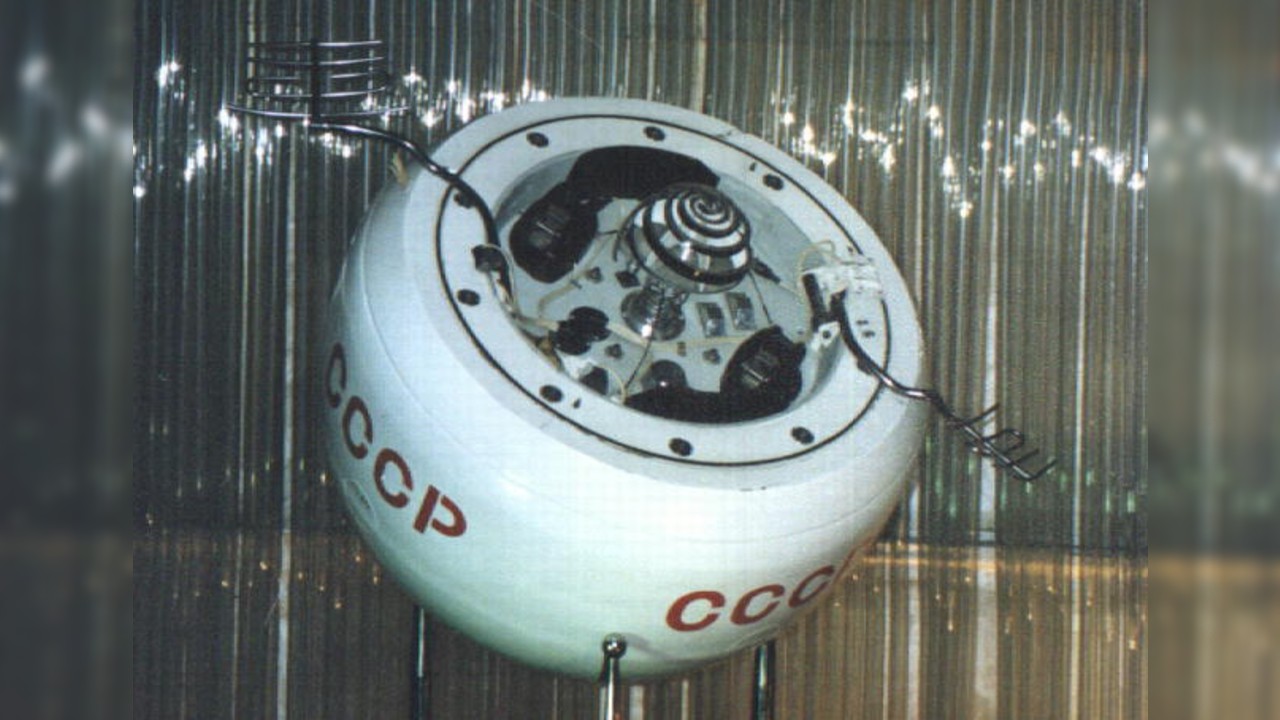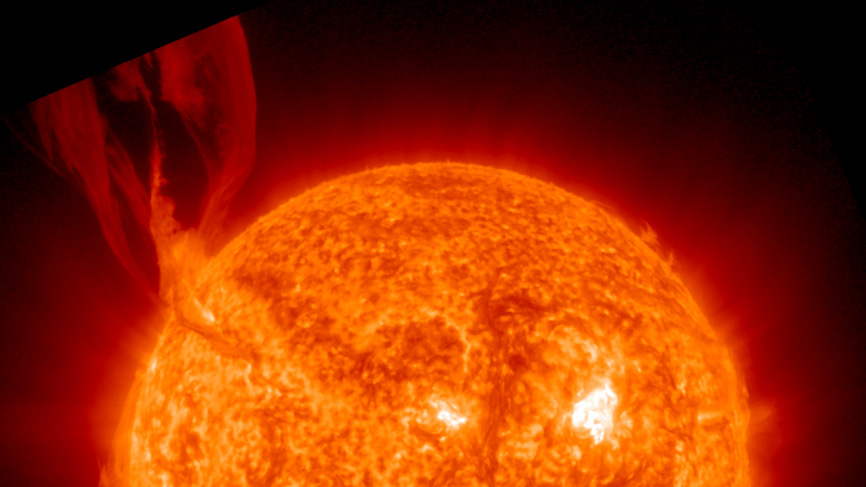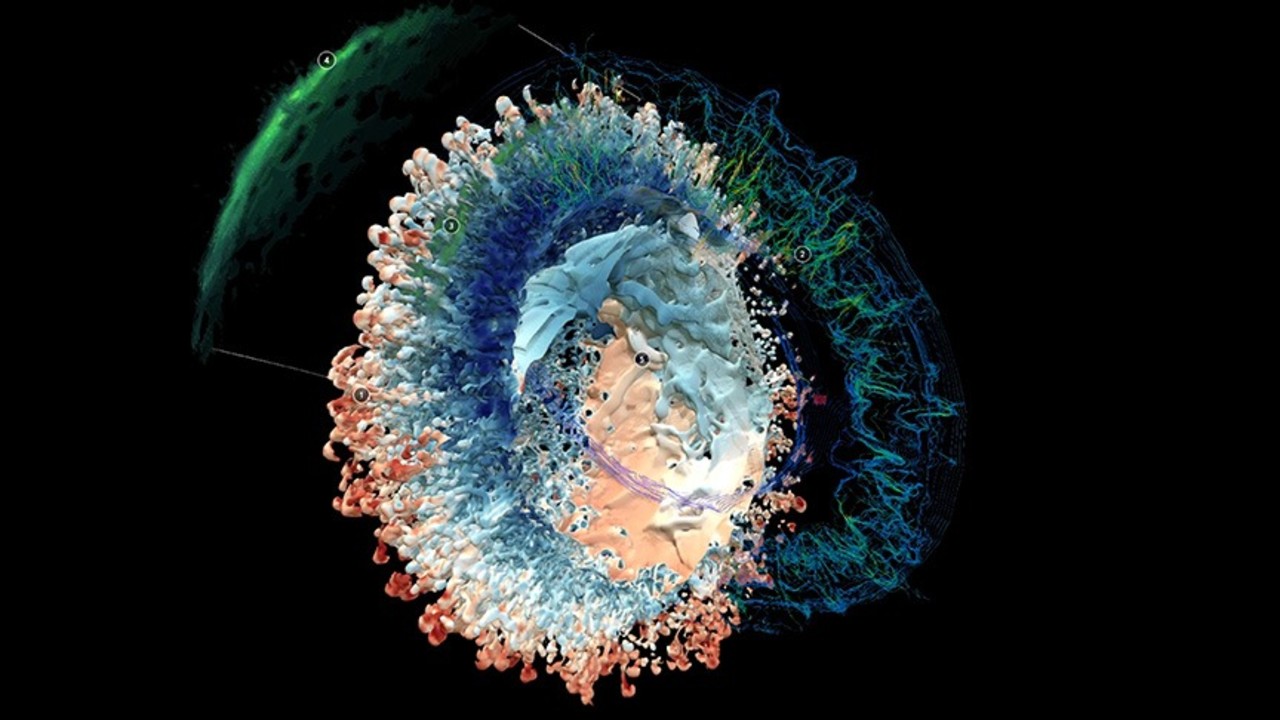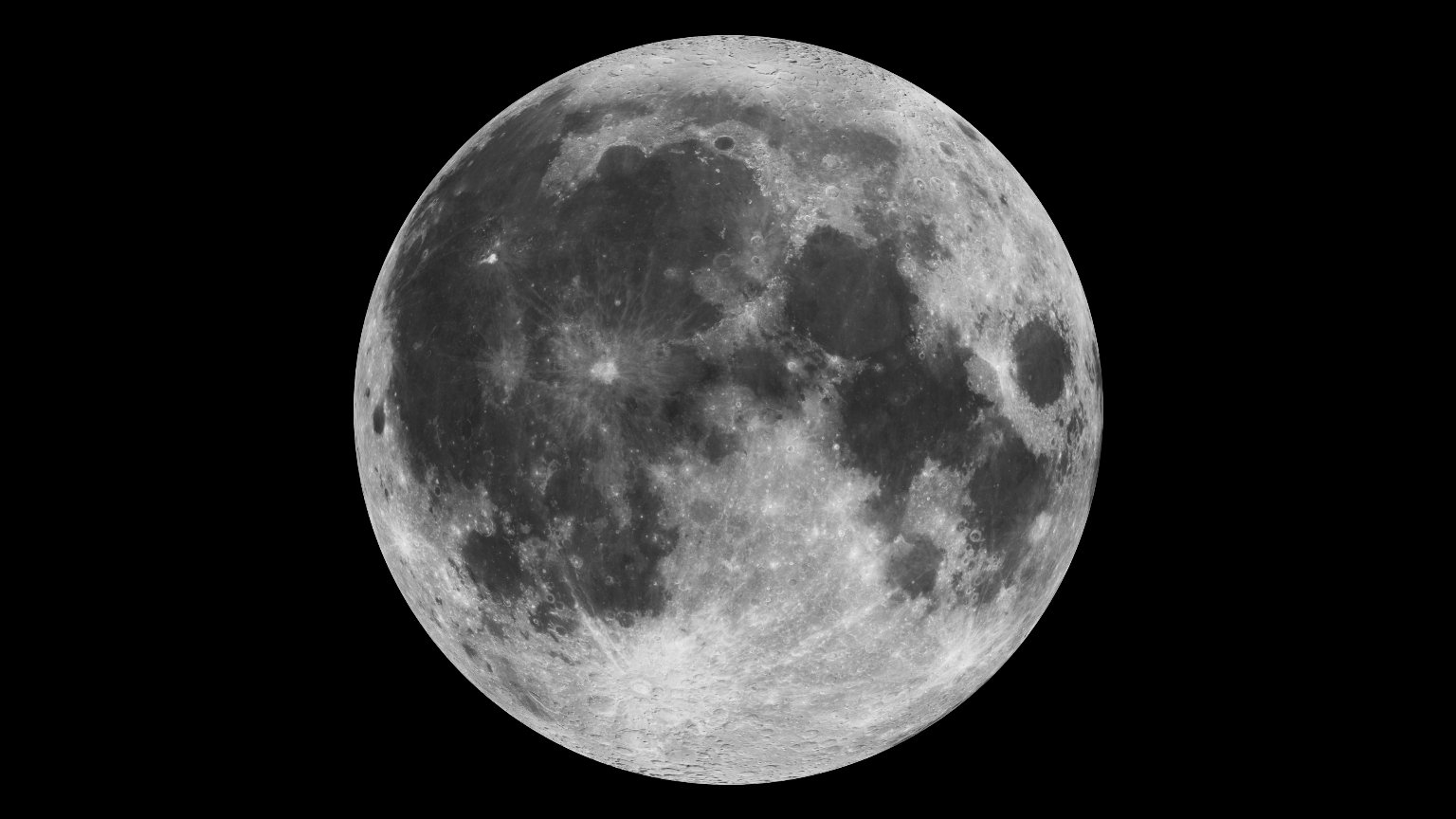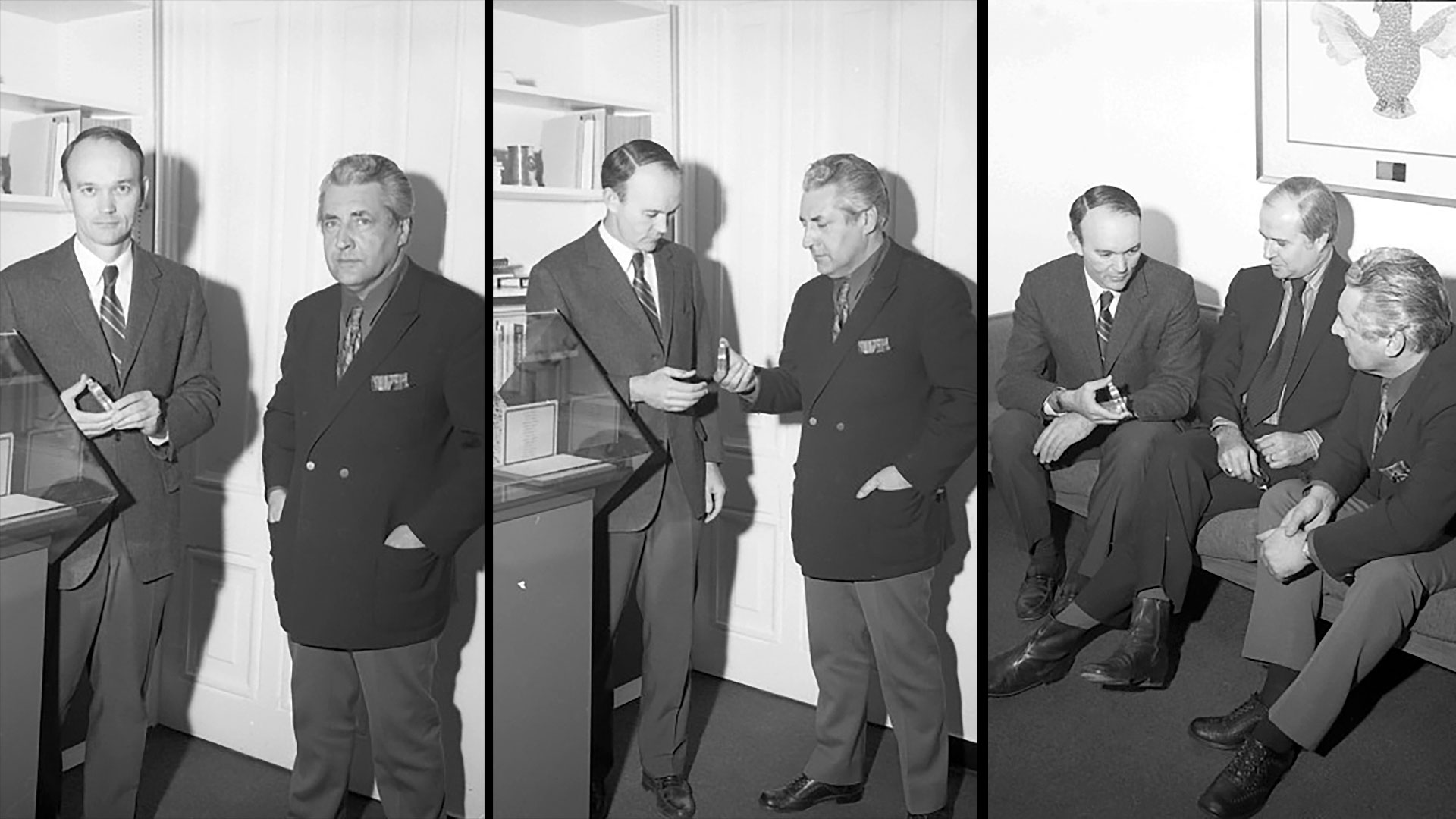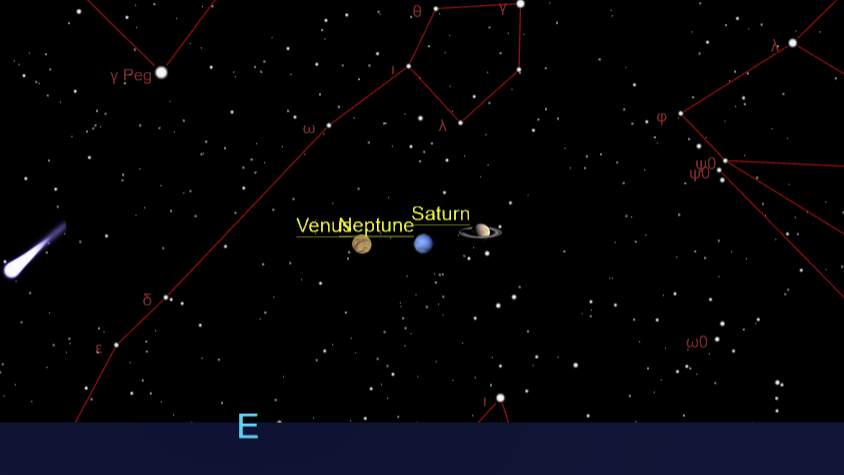Cape Canaveral bases redesignated for Space Force, but in name only (for now)
They're now Cape Canaveral Space Force Station and Patrick Space Force Base.

One of the United States' first space launch sites now bears the name of the nation's newest military branch, though for now it is an association in name only.
Cape Canaveral Air Force Station and Patrick Air Force Base in Florida were redesignated Cape Canaveral Space Force Station and Patrick Space Force Base on Wednesday (Dec. 9).
"Today we make history with the first two installations in the history of the United States Space Force to bear the name of this new branch of the service," said Vice President Mike Pence prior to unveiling updated signs displaying the new names. "It is a great day for our military, it is a great day for Florida and it is a great day for America."
Related: What is the United States Space Force?

"It's just one more milestone in a journey that we began a little bit more than a year ago with the establishment of the Space Force," said Pence.
Headquartered at Patrick Space Force Station, Cape Canaveral Space Force Station includes the historic, now-retired launchpads from where the first U.S. satellite, Explorer 1, was launched in 1958, and from where the first American astronauts lifted off for space and Earth orbit. The site is also where planetary probes have departed for all of the planets in the solar system and points beyond.
First established as the Joint Long Range Proving Ground after the base was transferred from the Navy to the Air Force in 1948, the launch site has also been known as the Air Force Missile Test Center (1951), Cape Canaveral Missile Annex (1958) and Cape Kennedy Air Force Station (1963), before becoming the Cape Canaveral Air Force Station in 1973.
Get the Space.com Newsletter
Breaking space news, the latest updates on rocket launches, skywatching events and more!
Patrick Space Force Base, formerly the Banana River Naval Air Station and Joint Long Range Proving Ground Base, was renamed in 1950 for Army Major General Mason Patrick, the first chief of the Army Air Corps.
"The sum of what started here ... lays the foundation of our giant leaps in space — back to the moon, the planets, and like Voyager 1 and 2, further still," Department of the Air Force Secretary Barbara Barrett said at Wednesday's naming ceremony.
Although the sites have been renamed for the new military branch, the "jurisdiction and command" of both Cape Canaveral Space Force Station and Patrick Space Force Base "will remain under the Air Force until officially transferred at a future date to be determined," Space Force officials said.
The new designations will not change either location's operating support, funding or agreements as they were when named for the Air Force. Still, the renaming will bolster the visibility of the Space Force, as founded on Dec. 20, 2019. The Space Force exists to "provide freedom of operation for the United States in, from, and to space" and "provide prompt and sustained space operations," according to the National Defense Authorization Act for Fiscal Year 2020.
Cape Canaveral Space Force Station currently has three active launchpads that support United Launch Alliance (ULA) and SpaceX rockets on missions for NASA, commercial customers and the Department of Defense. Another complex is now under development to support future Blue Origin launches.
"Today, we start a new era at both Cape Canaveral Space Force Station and Patrick Space Force Base aligning the installation names with their critical missions," said Gen. Jay Raymond, chief of space operations for the U.S. Space Force, acknowledging the long-running achievements of the 45th Space Wing at the installation.
"Today their titles will reflect the space missions that the 45th Space Wing and its mission partners execute with precision, passion and pride every day. Moving forward, we will integrate our service, elevating the power that space brings to the nation, the joint force and our allies," he said.
Follow collectSPACE.com on Facebook and on Twitter at @collectSPACE. Copyright 2020 collectSPACE.com. All rights reserved.
Join our Space Forums to keep talking space on the latest missions, night sky and more! And if you have a news tip, correction or comment, let us know at: community@space.com.

Robert Pearlman is a space historian, journalist and the founder and editor of collectSPACE.com, a daily news publication and community devoted to space history with a particular focus on how and where space exploration intersects with pop culture. Pearlman is also a contributing writer for Space.com and co-author of "Space Stations: The Art, Science, and Reality of Working in Space” published by Smithsonian Books in 2018.In 2009, he was inducted into the U.S. Space Camp Hall of Fame in Huntsville, Alabama. In 2021, he was honored by the American Astronautical Society with the Ordway Award for Sustained Excellence in Spaceflight History. In 2023, the National Space Club Florida Committee recognized Pearlman with the Kolcum News and Communications Award for excellence in telling the space story along the Space Coast and throughout the world.



